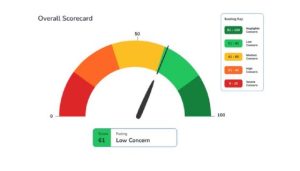 Donald Kalfen
Donald Kalfen
Glass Lewis (GL) recently announced a significant change to its quantitative pay-for-performance (PfP) assessment methodology for U.S. and Canadian companies starting in 2026.
Background
Currently, GL assesses pay-for-performance using an A-F letter grade system by measuring the gap between a company’s percentile rankings on executive compensation and company performance. Executive compensation is calculated for named executive officers (NEOs) using Summary Compensation Table amounts, except GL recalculates the grant date value of equity awards based on its own assumptions and excludes any cash severance and change in pension value amounts. Performance is measured based on five measures of shareholder wealth and financial performance over weighted one-, two- and three-year periods (except for return measures, which are measured over a one-year period).
Summary of GL’s Revised PfP Methodology
GL’s revised methodology differs significantly from the current methodology. Specifically, the revised methodology:
• Replaces the current with A-F letter grade system with a 0-100 numerical scorecard system, with an associated concern level (e.g., Negligible, Low, Medium, High or Severe)
• Uses a scorecard-based approach that includes five quantitative tests
• Lengthens pay and performance evaluation time period from three to five years
• Includes a new qualitative test that reviews additional facets of compensation
GL does not appear to have changed its methodology for calculating total NEO compensation.
Details on the revised pay-for-performance methodology are summarized below.
Details of GL’s Revised PfP Methodology
GL’s revised PfP evaluation will assess a company’s performance against six quantitative tests measured over five-year periods and certain pay practices or disclosures against seven qualitative tests. Below is a summary of these tests.
• Relative quantitative tests1
1) Granted CEO pay versus total shareholder return (TSR)
2) Granted CEO pay versus to financial performance2
3) Total granted NEO pay versus financial performance3
4) CEO short-term incentive payouts versus TSR4
5) CEO compensation actually paid (CAP) versus TSR (U.S. companies only) 5
6) CEO realized pay versus TSR (Canadian companies only)
• Qualitative tests
1) Did the company grant any one-off awards?
2) Did the company exercise any upward discretion on incentive awards?
3) Does fixed pay exceed variable pay?
4) Does the company cap incentive award payout amounts?
5) Is the maximum payout for performance-based award excessive?
6) Do long-term incentive awards have a short vesting period?
7) Does the company disclose performance goals used to determine incentive award payouts?
Each of the quantitative and qualitative tests is assigned a numerical score and aggregated to a total score ranging from 0 to 100. Glass Lewis derives an overall level of concern based on the total numerical score. As shown below, a company with an overall score within certain decile ranges will yield one of five concern levels.

A company that receives an overall “high” or “severe” concern level under the revised PfP tests will be more likely to receive a negative vote recommendation on its Say on Pay proposal than a company with lower concern levels. However, irrespective of the overall concern level, GL will consider other qualitative factors in determining its vote recommendations.
GL has not indicated whether GL expects the revised PfP evaluation methodology will affect the number of companies that receive poor marks that could adversely affect GL’s vote recommendations.
1 A company is compared against GL selected peer companies, except as noted.
2 Glass Lewis will generally assess financial performance based on the five metrics: (i) revenue growth, (ii) return on equity, (iii) return on assets, (iv) EPS growth and (v) operating cash flow. However, GL will assess banks, financials, and REITs against certain sector-specific measures in lieu of EPS growth and operating cash flow.
3 Ibid.
4 For the CEO short-term incentive payouts versus TSR test, a company is compared against general market-based benchmarks.
5 For the CAP versus TSR test, company is compared against market capitalization-based peer companies.
* * * * *
The Client Update is prepared by Meridian Compensation Partners’ Governance and Regulatory Team led by Donald Kalfen. Questions regarding this Client Update or executive compensation technical issues may be directed to Donald Kalfen at 847-235-3605 or dkalfen@meridiancp.com.
This report is a publication of Meridian Compensation Partners, LLC, provides general information for reference purposes only, and should not be construed as legal or accounting advice or a legal or accounting opinion on any specific fact or circumstances. The information provided herein should be reviewed with appropriate advisors concerning your own situation and issues.
